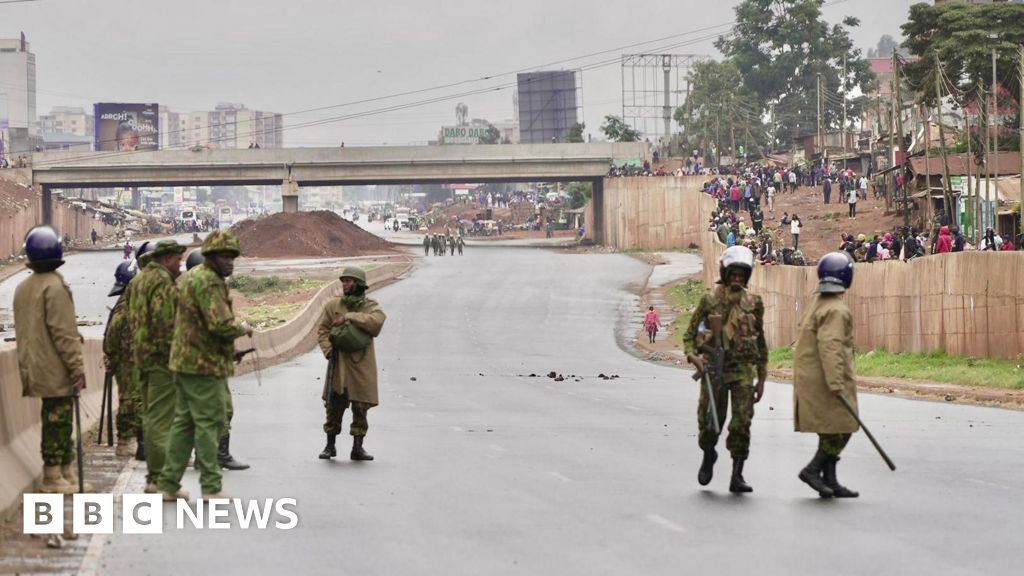Seal in the middle of Nairobi before the Kenyan protests
Kenya’s security forces prevented all the main roads leading to the center of Nairobi, before the planned protests in the country.
Many of the city center is deserted, with companies closing and intense security presence in the streets. Some schools advised students to stay at home.
Hundreds of passengers were cut off in the early morning and passengers overnight at the checkpoints, some of which are more than 10 kilometers (six miles) from the city center, with a few vehicles.
Inside the city, roads that lead to major government sites – including the official residence of the president, the state house, and the Kenyan parliament – are fortified with shaving wires.
In a statement issued on Sunday evening, the police said it was its constitutional duty to protect lives and property while maintaining public order.
The protests on Monday, which is called Saba Saba (Al -Swahili on July 7), toppled the struggle in the nineties for multi -party democracy in Kenya.
These demonstrations were organized primarily by the youth, demanding a good judgment, greater accountability, and justice to the victims of the police brutality. They are the latest in a wave of anti -government protests that started last year.
On June 25, at least 19 people were killed, thousands of companies were looted and destroyed one day in the country, which were held in honor of the dead in anti -tax protests last year.
The recent demonstrations have turned into violence, with reports of infiltration by “fools”, who are accused of looting and attacking the demonstrators. Civil society groups claim collusion between these groups and the police – accusations that the police have strongly denied.
On Sunday, an armed gang attacked the headquarters of NGOs in Nairobi. The Kenya Human Rights Committee was hosting a press conference organized by women calling for ending state violence before Monday’s protests.
This year coincides with the thirty -fifth anniversary of the original protests of Saba Saba – a basic moment that helped introduce multiple democracy in Kenya after years of rule.
The response was by the government at the time of President Daniel Arab Moy. Several demonstrators were arrested, while at least 20 people were said to be killed.
Since then, Saba Saba has been symbolizing civil resistance and fighting for democratic freedom in Kenya.



